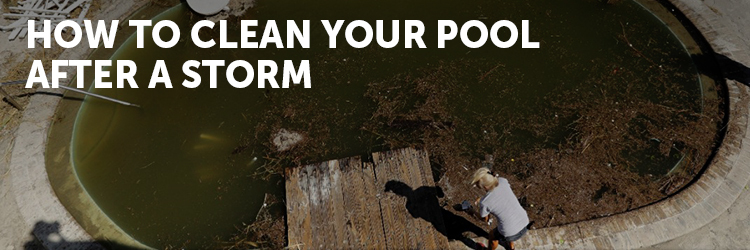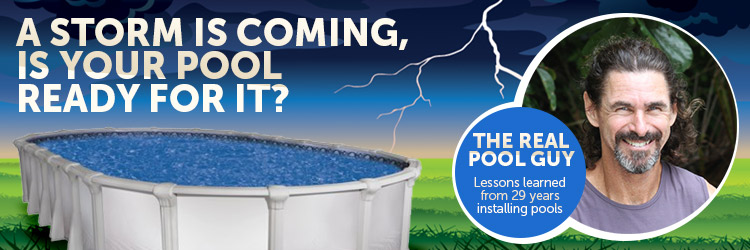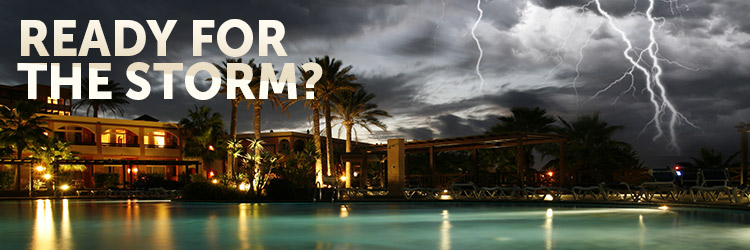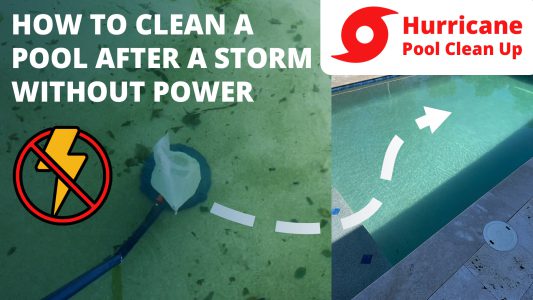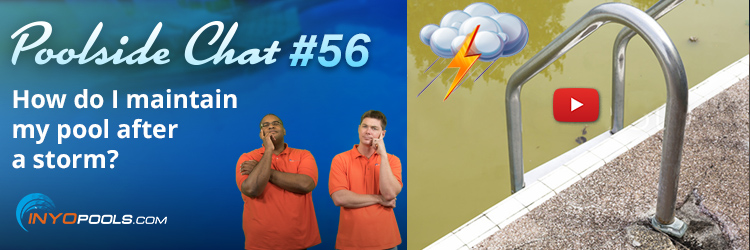Let’s face it, cleaning your swimming pool after a storm or hurricane can be annoying. However, somebody has to do it, right? The longer you wait to clean your pool after a storm, the worse the conditions are going to get, and the harder the process will be.
In many cases, pool owners might feel overwhelmed by the damage done to their house and pool. Sometimes, they don’t even know where to begin. Hopefully, you began your search with Inyopools.com. In this blog article, we provide a detailed checklist that pool owners can use to clean their swimming pools after a storm or hurricane.
Cleaning Your Swimming Pool After a Storm or Hurricane
At some point, your pool will go through a storm (literally and metaphorically). If you live in Florida, you will definitely understand. Still, it is important for every pool owner to have a plan in place for their pool before and after a storm.
Step 1. Remove Debris
The first step is to remove as much debris from your pool as possible. Make sure never to use your bare hands to remove debris from the pool.
Frankly, you just don’t know which type of bacteria might be living in your water.
As a precautionary measure, invest in some waterproof gloves before dipping your hands in. Next, make sure the skimmer and pump baskets are free of debris.
Step 2. Contact Your Pool Professional (if you have one)
If you already pay a pool professional to take care of your pool, contact them to see when their earliest appointment is. Typically, pool professionals see a spike in business after a storm. It’s really important to stay on top of them so that you can address your pool’s needs.
In the meantime, though, you can also ask for any recommendations they may have for your specific pool. You can even discuss this checklist with them.

Step 3. Turn Power OFF
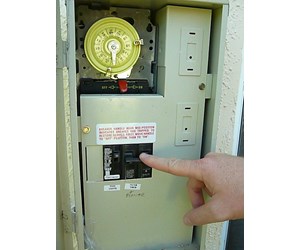 Next, if you haven’t already done so, make sure you turn the power OFF at your equipment. Don’t forget, breakers often trip during storms and heavy rain. If this happens, reset the breakers. Then, you want to ensure your pool equipment is operable.
Next, if you haven’t already done so, make sure you turn the power OFF at your equipment. Don’t forget, breakers often trip during storms and heavy rain. If this happens, reset the breakers. Then, you want to ensure your pool equipment is operable.
If, for whatever reason, your breaker won’t reset, call a professional. GFCIs are quite sensitive to moisture so if your breaker trips after a storm, you might just need to let the sun do its thing for a day or two.
If it’s not summer, you can probably just leave the pump off for a day. In the summertime, you can still get by without your pump running for a day or two. However, if your pump is off, your pool requires extra chlorine (shock) and manual circulation with a pole a few times a day.
Step 4. Check Your Water Levels
Sometimes, heavy rains and thunderstorms will cause flooding in your area. As a result, a lot of unnecessary water can end up in your pool. If this is the case, remove some of the excess water with a sump pump or a siphon.
Step 5. Clean & Backwash Filter
 The filtering process is crucial while you’re balancing and maintaining your pool. Any size storm can bring large amounts of bacteria, dust, and pollen into your pool. Before running your filter, it will probably need a good cleaning or backwashing.
The filtering process is crucial while you’re balancing and maintaining your pool. Any size storm can bring large amounts of bacteria, dust, and pollen into your pool. Before running your filter, it will probably need a good cleaning or backwashing.
If you have a D.E. filter, now is probably a good time to replace the D.E. powder. For cartridge filters, remove each cartridge so that you can examine and clean them individually. In short, you want your filter in optimal shape.
If you need a step-by-step guide on how to clean your filter, check out the resources below.
How to clean/backwash a sand filter
Step 6. Brush & Vacuum
Next, it’s time to do some preliminary cleaning. Preliminary cleaning includes ridding your pool of dirt and debris at the bottom of the pool. Start cleaning by vacuuming any excess dirt lying on your pool’s floor. If you have an automatic cleaner, even better.
If your pool setup allows you to vacuum directly to waste, we recommend doing that instead of running the dirt through your filter. Vacuuming directly to waste will save your filter from clogging. However, if you cannot vacuum to waste, don’t forget to pay close attention to your filter’s pressure gauge. Keep an eye on your pressure gauge, as well. Once the pressure is too high, you want to backwash to clean your filter manually.
Finally, you also want to spend some time brushing your pool walls. Try and remove as much dirt and bacteria as possible. You can repeat this process as necessary.
Step 7. Test Your Pool Water
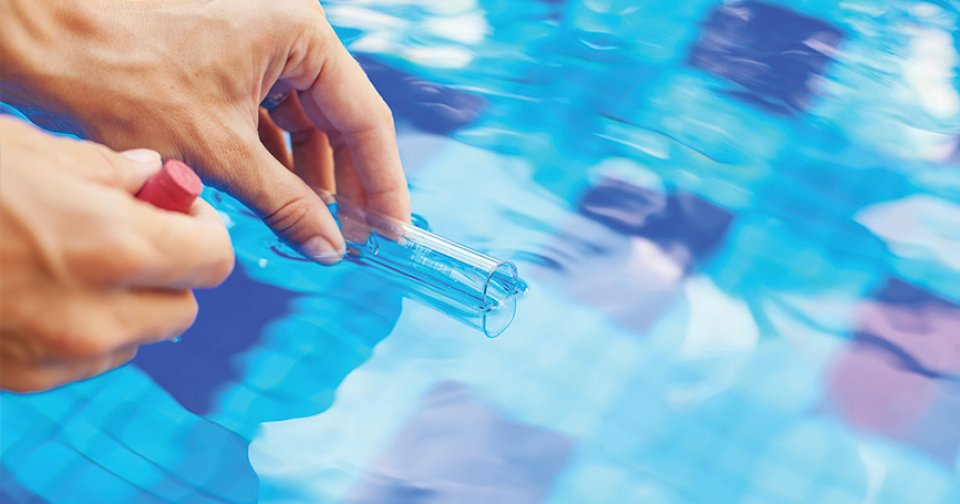 Testing your water is a crucial step towards balancing your pool. Whenever possible, we like to recommend pool owners keep an at-home water testing kit for times like this. Typically, we recommend the Taylor Testing Kit. It is a little on the expensive side, however, it is accurate, efficient, and comprehensive.
Testing your water is a crucial step towards balancing your pool. Whenever possible, we like to recommend pool owners keep an at-home water testing kit for times like this. Typically, we recommend the Taylor Testing Kit. It is a little on the expensive side, however, it is accurate, efficient, and comprehensive.
Depending on the severity of the storm, you may not have the time or ability to take a water sample to a local pool store. Keeping an at-home testing kit is an easy and quick solution.
Step 8. Super Chlorinate
The first chemical you want to add to your pool is chlorine and lots of it. Shocking the pool stops algal blooms or any other bacteria from forming. Depending on how bad your pool is, you want to shock your pool two to three times the normal amount.
Step 9. Balance Your Water Chemistry
Once your chlorine levels are level, you can begin to balance your other chemicals. Adjust your total alkalinity, pH, and CYA levels accordingly. Don’t forget to continue testing and filtering your pool as you go.

Common Mistakes
- Do not drain your pool especially in wet soil.
- Do not turn on your pool equipment without first checking electrical systems and components.
- Only use your pool cleaner after you have removed all of the larger debris. Failure to do so can clog your cleaner.
- Do not continue to run your pump without paying attention to the filter and skimmer.
If you are having trouble balancing your pool and need more assistance, we recommend you read our “How To Clean a Green Pool” article and watch the video below. We provide an in-depth explanation on how to rid your pool of algae.
